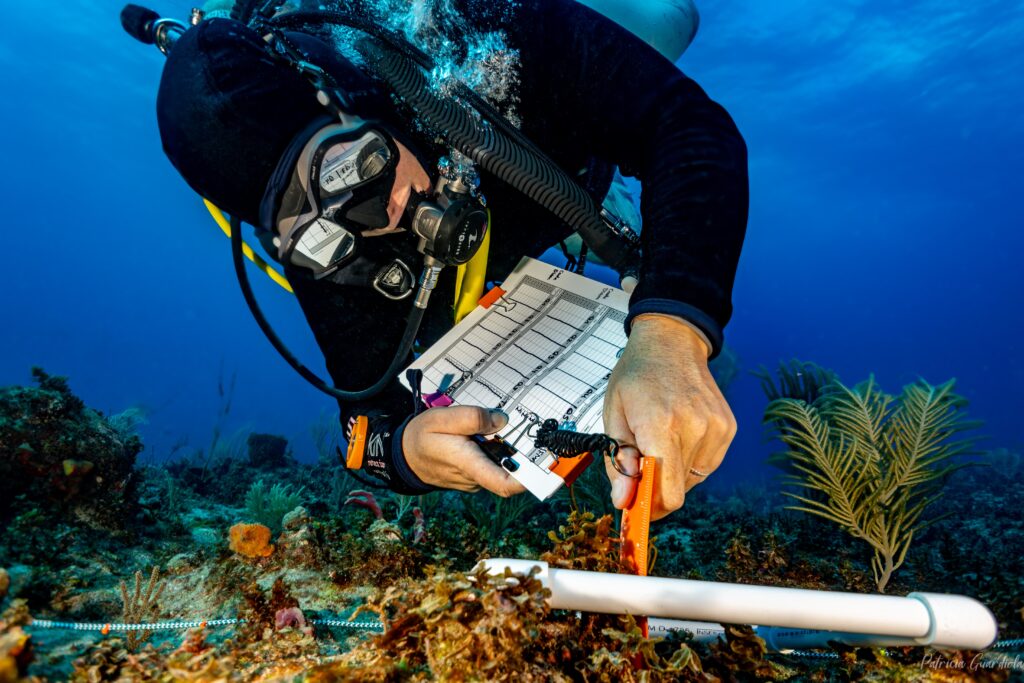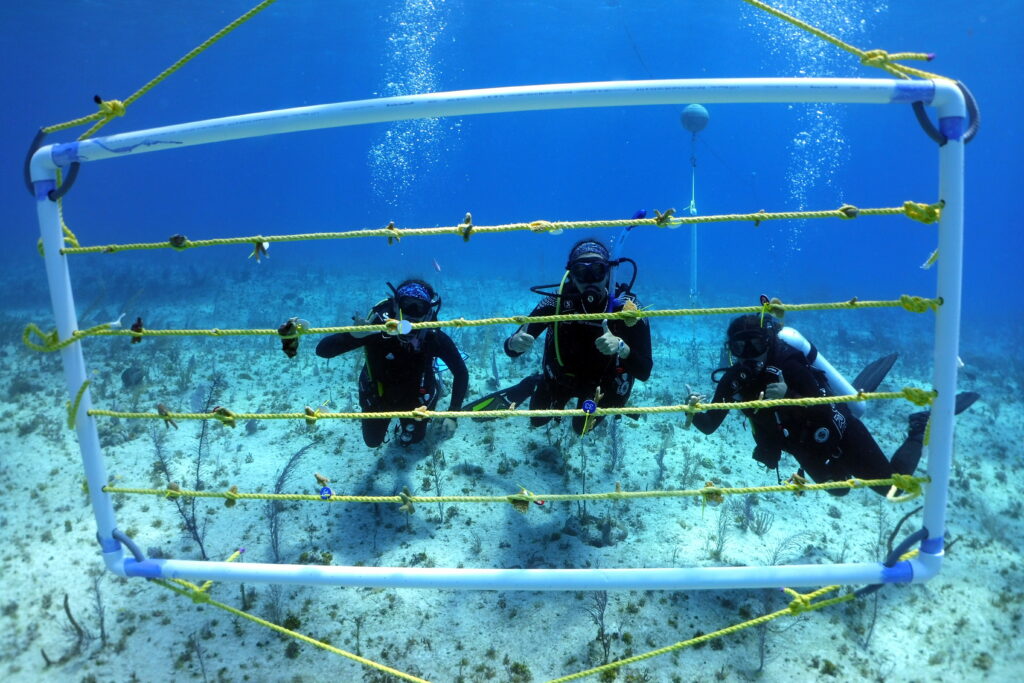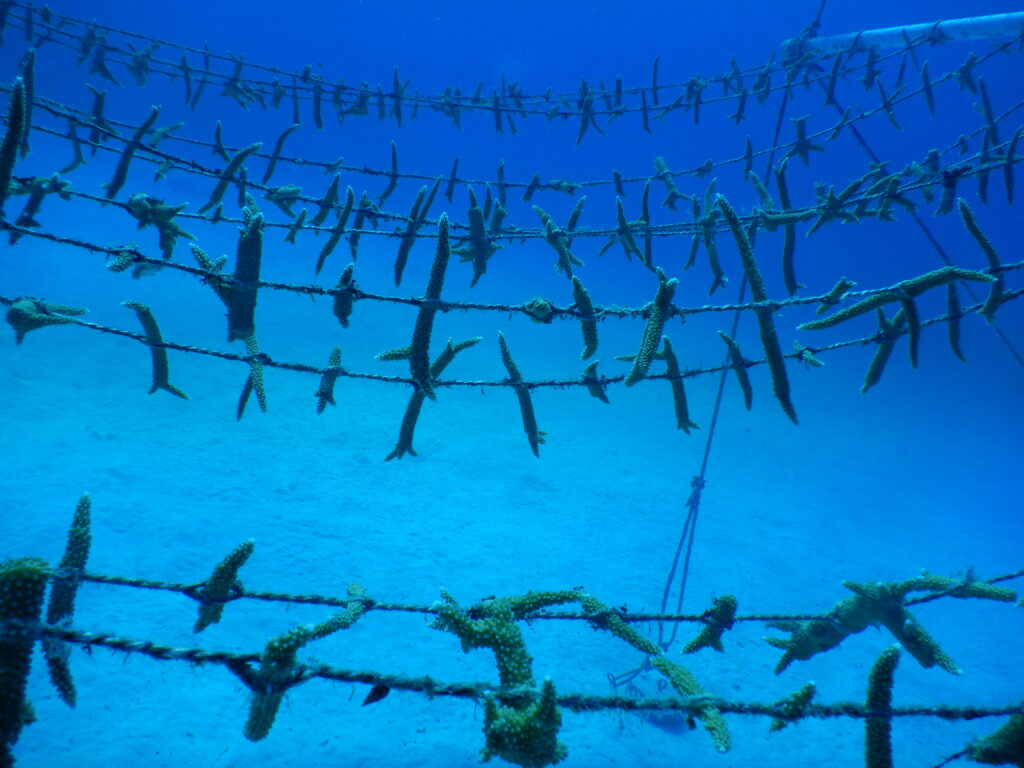Flying into the Turks and Caicos Islands, the first sight that grabs your attention is the unbelievably turquoise blue water that surrounds the 40-island archipelago.
That water, teeming with marine flora and fauna, is the lifeblood of the Turks and Caicos Islands tourism industry.
From relaxing on the white-powdery sands of the award-winning Grace Bay Beach and soaking in the crystal-clear seas on the various islands and cays to diving off the third largest barrier reef in the world and snorkelling among tropical fish, dolphins, and sea turtles, the Turks and Caicos Islands are a playground for leisure seekers and divers around the world.
Divers do more than simply enjoy the beauty around them as a bucket list item, however, they also play a crucial role in helping to protect the destination’s coral reefs which face threats from rising sea temperatures, pollution, human activities, and disease. The volunteer work from divers and other interested visitors is crucial to the work that the Turks and Caicos Reef Fund has been doing to save the reefs.
The Turks and Caicos Reef Fund, established in 2010, is a Non-Profit Organisation that is dedicated to protecting the reefs on the Turks and Caicos Islands. The organisation works closely with the Department of Environment and Coastal Resources (DECR) under the Ministry of Tourism, which is responsible for protected areas management, promotes sustainable use of natural resources through outreach programmes, regular environmental monitoring, regulation and enforcement. This is no small feat as almost 30% of the islands are protected.
The organisation was started by two expats living in Providenciales, the tourist hub of the Turks and Caicos Islands, who saw the need for environmental advocacy and mooring infrastructure to prevent boats from dropping their anchors on the reefs.



The Reef Fund has also been leading the way in coral restoration in the Turks and Caicos Islands and regionally, especially since the arrival of the Stony Coral Tissue Loss disease that threatens the survival of coral reefs across the Caribbean.
Since 2016, the Reef Fund has been growing endangered corals in their in-water nurseries. The Boulder species, due to their susceptibility to the Stony Coral Tissue Loss disease, are grown in the nurseries at the Fund’s South Bank Marina office in Long Bay, Providenciales, and replanted in the ocean.
Alizee Zimmerman, Executive Director, said that they also have a bio-bank comprising “corals of opportunity” that are removed from construction sites or big dock systems.
“We were able to save 450 colonies from the docks. We were trying to avoid taking healthy corals off the reefs, but to ensure a good genetic diversity, some colonies have been taken from the wild,” she said.
Dubbed the “Noah’s Ark”, this land-based bio-bank is where 10 species of reef-building stony corals are being grown.
In 2022, the Reef Fund began working on a land-based facility where they grow endangered Elkhorn and Staghorn corals. They utilise artificial structures called coral ladders, PVC structures with ropes, where the corals are grown.
In 2023, the Coral Reef Restoration Initiative was expanded to the island of South Caicos, where fishing and other marine activities are the primary attractions. Zimmerman said they created the South Caicos Coral Reef Consortium, a partnership with the School of Field Studies, a US-based study abroad program, the new Salterra Luxury Collection Resort and Spa, which funded the project, and the Reef Fund’s Scientific Advisors from South Florida; the Reef Institute.
Dr. Heidi Hertler, Centre Director of the Centre for Marine Resource Studies at the School of Field Studies, said the collaboration started a year ago when they began talking to stakeholders about restoring the reef that had dramatically been impacted by the Stony Coral Tissue Loss disease.
“Initially we started with some in-sea nurseries with the ladders, similar to what the Reef Fund was doing in Providenciales but we wanted to take the next step with a flowing seawater system. Salterra provided the funds to convert an old storage room near the coast into a nursery with 300-gallon flowing seawater tanks. The water comes in, flows to the tanks, and flows back out,” she said.
There are 15 corals in the tanks which, she said, were just rolling along and collected by students. She said they hope to fragment the corals soon which helps them to grow faster.
They are currently applying for funds to install a closed system since the open water system still exposes the corals to environmental hazards. Dr. Hertler said their closed system will operate on solar power to mitigate any effects in the event of a power outage. The system will also be housed in an air-conditioned room to protect the corals from the vagaries of the environment.
Dr Hertler said they also intend to create a gene bank as well. The species of corals that they are working with are the Acropora, Elkhorn and Staghorn.
She said before replanting the corals, they are researching to assess the best areas for them as corals tend to thrive better in cooler waters. The Centre has been doing research since its existence and that data is being used to determine the best sites to ensure the corals have more success at survival.
In the past, the Centre recruited volunteers from the East Bay Resort which was purchased by Salterra/Marriott to assist in the replanting and cleaning of the reefs. Dr Hertler said when Salterra opens in January 2025, they hope to continue the weekly presentations to guests.
If you are visiting the Turks and Caicos Islands and want to get involved in reef restoration, there are many ways to do so. Through the TC Reef Fund you can adopt a coral as a gift for a loved one, or you can take photos of the reefs while diving to assist in the Reef Fund’s assessment. If you wish to assist, contact the TC Reef Fund via email at info@tcreef.org.

